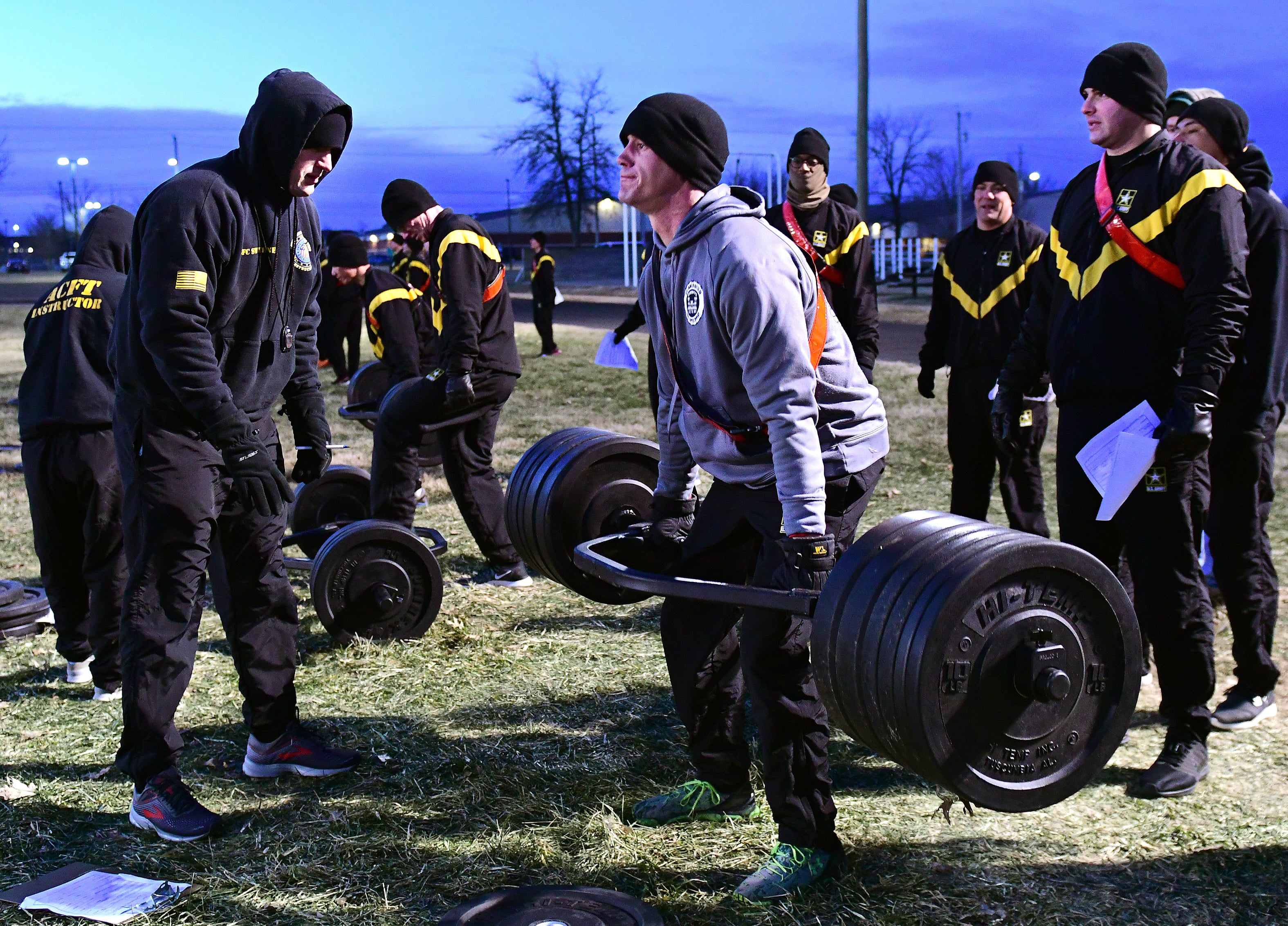It is April 2019 and just like winter is undoubtedly coming to the Seven Kingdoms of Westeros, the Army Combat Fitness Test or ACFT is coming to the Army this fall. Although there is a certain level of fear surrounding the ACFT, if one event were the “Game of Thrones" Night King” it would be the deadlift as it has caused more fear in conversations I’ve had with folks than the other events combined. I think this fear is misplaced and I am here to offer three simple antidotes to that fear in the form of preparation.
So, grab a trap bar, some plates, and start preparing for the inevitable:
The Bodyweight Century:
- Load a trap bar with your bodyweight
- Start a timer and complete 100 reps for time.
- The goal should be to complete the workout in 10 minutes or less.
I like this workout because it combines strength with conditioning. It also is a great evaluation tool as it used bodyweight. If you are not hitting the target after repeated attempts and training, maybe dropping excess body fat/weight might be as beneficial as getting stronger.
The Sadiv Set:
This workout was taught to me by world-renowned strength coach Martin Rooney and named after his friend and famous powerlifter Rich Sadiv, who has drug-free 694.5-pound deadlift at a bodyweight of 195 pounds, so he knows a thing or two about deadlifting.
- Load a trap bar ~60 percent of known or expected 1 rep max and set a timer for 12 minutes.
- Perform each rep as a single (release the bar after each rep and reset) with maximum speed from the floor.
- The goal should be at least 30-48 high-quality reps.
If you didn’t get 30, lower the weight; if you got more than 48, increase the weight next time. The Sadiv Set allows you to reach higher volume in a shorter time than say if you did 5x5 with five-minute rest between sets. Plus, there is something about timing a workout that ups the intensity and focus.
Cluster Bomb:
- Load a trap bar with a weight you can lift for two to four continuous reps.
- Compete for six sets of 3 x 2 “clusters” with 30 seconds of rest after every two repetitions and 4 minutes and 30 seconds rest after the between sets. So it would go two reps-rest 30 seconds, two reps-rest 30 seconds, two reps-rest 4 minutes 30 seconds, repeating this sequence a total of six times.
This workout takes advantage of the concept of “cluster sets,” which allow you to handle more weight for a given volume of training by taking short rest periods of 30 seconds spaced between repetitions. So, for the workout above you could compare it to a standard six sets of six reps workout with five-minute rest in between. The cluster protocol will allow you to handle more weight than you would be able to complete for six continuous reps.
There is scientific evidence supporting this cluster, as a recently published study reported improvements in power and velocity measured by a lower countermovement jump comparing the above cluster to a standard six sets of six repetitions workout. That means that this workout will improve not only your deadlift but also two other events on the ACFT: the standing power throw and sprint-drag-carry. You’re welcome.
Give these three workouts a try using the format of each workout as a sequential gatekeeper. If you can’t do the bodyweight century in under 10 minutes, train until you do before moving onto the Sadiv Set.
If you can’t get 30 reps with 60 percent of your 1RM for the Sadiv Set standard, train until you can before moving on to a cluster bomb; once you have achieved all the benchmarks, feel free to incorporate the workouts into your training plan based on your goals.
Generally, I do not recommend training the deadlift more than twice on a given week. Change can be scary, but we can either let this fear freeze us with inactivity or fuel our fire and act. Because, like or not, fall 2019 the ACFT is coming, and although John Snow will not be able to help you, a workout from Rich Sadiv just might.
— Nick Barringer is an Army officer who works in the field of nutrition and human performance.
